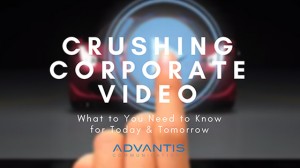 Just the word “video” in email subject lines boosts open rates, Cyrus Mavalwala, ABC, told a group of professional communicators this week.
Just the word “video” in email subject lines boosts open rates, Cyrus Mavalwala, ABC, told a group of professional communicators this week.
Using video makes it 10 times more likely people will share or comment on your posts. Video increases the chances you’ll end up on page one of search results.
Video can also substitute for face-to-face communication (“The most powerful form of communication, but it doesn’t scale,” Cyrus said), sharing the emotion and reaching many people. It helps you tell a better and more personal story.
Video is also great for feedback. You can see how many people watched it, or where drop-off rates show a problem.
Here are the main points about video that I took away from the presentation:
1. Start with a strategy
As with any communication, always ask, “Why are we doing this?” Understand your business objectives and your audience. What do you want the viewer to know, think or do? How will you measure it? Once you have the video, how are you going to market it? How else can you use and reuse it?
2. Focus on content
Remember that viewers are comparing your efforts to amazing, entertaining content elsewhere. For example, every week, GoPro posts stunning videos using what it calls “the world’s most versatile camera.” High-definition and 3D in movies immerse the viewer in the experience. A basic, boring, linear video doesn’t stand a chance against that kind of competition, and it’s up to us as communicators to prevent our companies or clients from producing one.
3. Pay less attention to camera resolution
You can make a professional-looking video with a cellphone. Having said that, don’t rely on your phone’s microphone; spend about $100 on a decent one that plugs into your phone. Also pay attention to lighting.
4. Hire a professional
Cyrus didn’t say this; I’m saying it, looking at some of the current and upcoming trends:
- Live streaming (powerful and low-cost)
- Interactive video (like the old “Choose your own adventure” books my sons used to read, this format lets the viewer/reader select where to go next; great uses for training, coaching, human resources, product demonstrations and much more)
- Personalized video (imagine a personal consultation walking an employee through pension investments, or a replacement for a university acceptance letter)
- 360-degree video (created by overlapping cameras in post-production; used by BC Tourism to spark traveller interest, for example)
- Augmented reality (cool, but too expensive for most businesses)
- Virtual reality (expensive, but keep it on your radar).
Cyrus gave this checklist for a successful video implementation:
- Is your content strategy tied to business objectives?
- What void does the video fill?
- Have you defined your target audience?
- Have you planned how to repurpose the content?
- Where will the video be hosted?
- Do you have a proactive marketing plan?
- How will you evaluate and measure the video’s performance?
Cyrus also reminded us of the content marketer’s manifesto, as stated by Rand Fishkin, founder of SEOMoz:
“I [your name] pledge to create something remarkable. Something that people will love, something they will want to share. Something I can be proud of. And if it fails to achieve my marketing goals, I won’t give up. I will try again. My failures will be the practice I need to earn future successes and future customers.”
Learn more about Cyrus and Advantis Communications and see some examples of interactive video.
